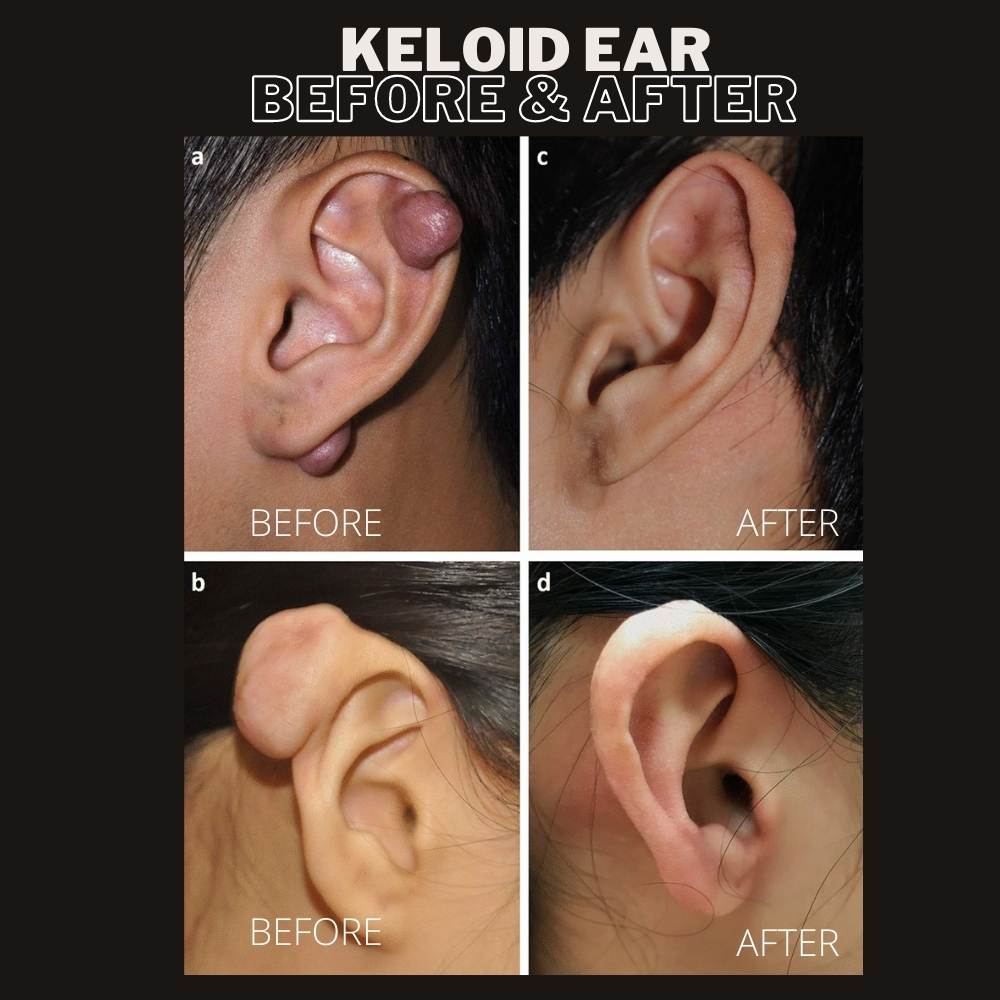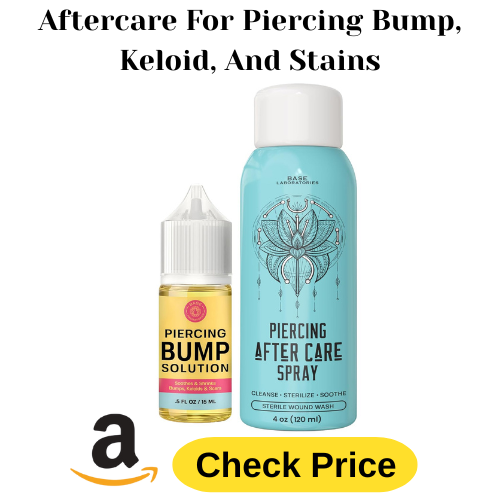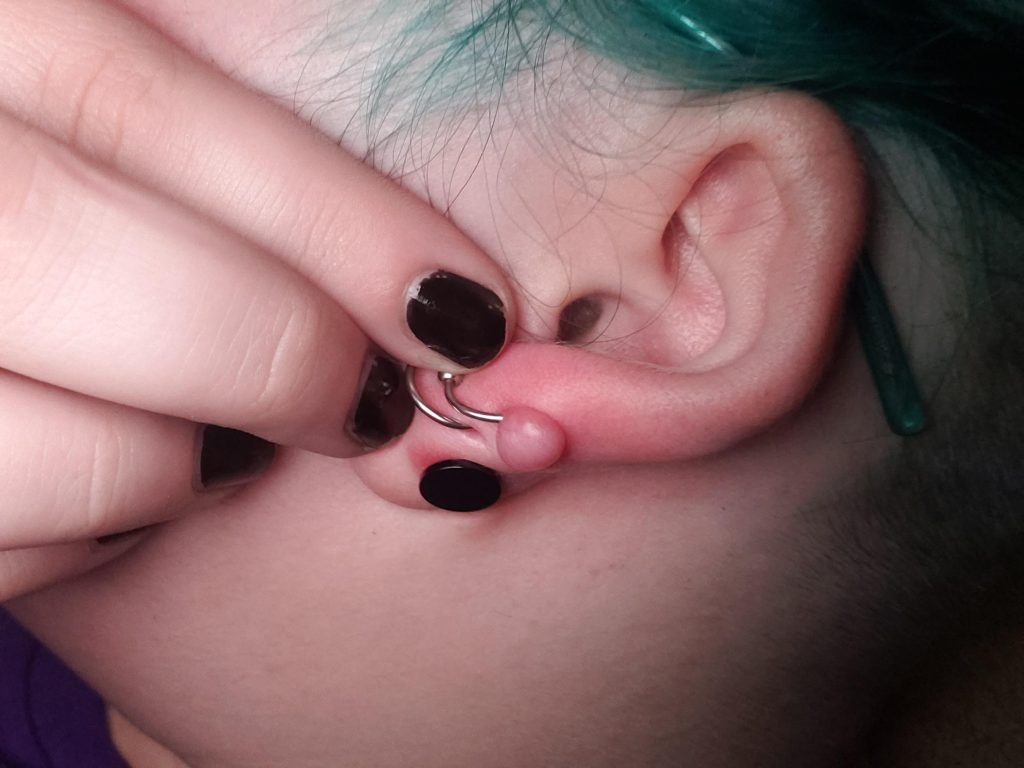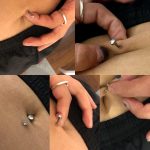Keloids can be annoying. They can appear after a piercing. A keloid is a thick scar. It grows larger than the original injury. Many people want to remove them. This article will help you understand keloids. You will learn how to get rid of a keloid on a piercing.

Credit: www.reddit.com
What is a Keloid?
A keloid is a type of scar. It forms when skin heals. The body makes too much collagen. Collagen is a protein in the skin. Sometimes, this extra collagen grows too much. It forms a raised bump on the skin. Keloids can be itchy or painful. They can also change color. Some keloids are dark and others are light.
Why Do Keloids Form?
Keloids can form for many reasons:
- Genetics: Some people get keloids more easily.
- Injury: Any cut or scratch can lead to a keloid.
- Piercings: Keloids often happen at piercing sites.
- Burns: Burns can also create keloids.
- Acne: Severe acne can lead to keloid formation.
If you notice a keloid, you are not alone. Many people have them. Keloids are more common in some skin types. They can affect anyone, but some people may be more at risk.

Credit: topplasticsurgery.org
How to Identify a Keloid
Identifying a keloid is important. Here are some signs:
- Raised skin: Keloids stick out from the skin.
- Color change: They may be darker or lighter than your skin.
- Itchiness: Keloids can feel itchy or sensitive.
- Pain: Sometimes, they can hurt.
Look closely at your piercing area. If you see these signs, you might have a keloid.
Home Remedies to Reduce Keloids
Many people try home remedies. These can help reduce keloids:
1. Aloe Vera
Aloe vera is soothing. It can help reduce inflammation. Apply fresh aloe vera gel to the keloid. Do this twice a day.
2. Apple Cider Vinegar
Apple cider vinegar may help. It can dry out the keloid. Mix it with water. Apply it to the keloid with a cotton ball. Do this once a day.
3. Honey
Honey is natural and healing. It can help soften keloids. Apply honey on the keloid. Leave it on for 30 minutes. Rinse with water.
4. Lemon Juice
Lemon juice can lighten scars. It can also help with keloids. Apply fresh lemon juice to the keloid. Leave it for 10 minutes, then rinse. Do this daily.
5. Baking Soda
Baking soda can help remove dead skin. Make a paste with water. Apply it to the keloid. Leave it for 15 minutes. Rinse off with water.
Medical Treatments for Keloids
Home remedies may not work for everyone. If your keloid does not improve, see a doctor. There are medical treatments available:
1. Corticosteroid Injections
Doctors can give you injections. These injections can shrink keloids. You may need several treatments.
2. Surgery
In some cases, doctors can remove keloids. However, they can come back. Surgery is not always the best option.
3. Cryotherapy
Cryotherapy freezes the keloid. This can reduce its size. It may need to be done several times.
4. Laser Treatment
Laser treatment can help flatten keloids. This treatment may also help with color change. It can take several sessions.
5. Silicone Sheets
Silicone sheets can help flatten keloids. You can wear them on the keloid. They can be found at pharmacies.
Preventing Keloids
Preventing keloids is important. Here are some tips:
- Choose a professional piercer. They know how to do it safely.
- Keep the piercing clean. Use mild soap and water.
- Avoid touching the piercing. This can cause irritation.
- Do not change jewelry too soon. Wait until it heals.
- Avoid heavy earrings. They can pull on the skin.
Taking care of your piercing helps prevent keloids.
When to See a Doctor
Some keloids need medical help. See a doctor if:
- The keloid is growing quickly.
- You feel pain or discomfort.
- The keloid changes color.
- You notice changes in texture.
It is always better to be safe. A doctor can give you options.
Living with Keloids
Living with keloids can be hard. They can affect how you feel about yourself. Here are some tips for coping:
- Talk to someone. Sharing feelings can help.
- Focus on the positive. Remember your good qualities.
- Seek support. Join a group or talk to friends.
- Consider professional help. Therapy can be beneficial.
You are not alone in this. Many people deal with keloids.
Frequently Asked Questions
How Can I Prevent Keloids On Piercings?
Keep your piercing clean and avoid touching it. Use proper aftercare to reduce keloid risk.
What Are The Signs Of A Keloid?
Signs include raised, thickened skin around the piercing. They may also be red or itchy.
Can I Remove A Keloid At Home?
Home removal is not recommended. It’s best to consult a doctor for safe options.
Are Keloids Painful?
Keloids are usually not painful. However, they can feel itchy or uncomfortable.
Conclusion
Getting rid of a keloid on a piercing takes time. Home remedies can help, but they may not work for everyone. Medical treatments are available too. If you have a keloid, do not lose hope. There are ways to manage it. Always consult with a doctor for the best options.
Remember to take care of your skin. Preventing keloids is possible. With the right care, you can enjoy your piercings. Stay informed and seek help when needed.



